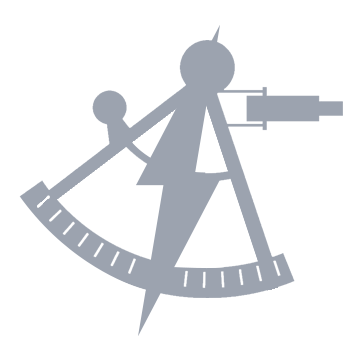The energy patterns encoding Lancaster and Sheppard’s molecular, atomic, and quantum structures moved in an instant through the transporter wave guide conduits connecting the small pad attached to the nacelle control room to the transporter room on the aft end of deck one. The transport cycle felt faster than normal since their patterns went directly from pad to pad without being stored in the pattern buffer first. The sensation left Lancaster slightly queasy from the feeling of briefly being in two places at once as he and Sheppard headed down the corridor to the main bridge. While they were walking, Sheppard reached over to flatten down Lancaster’s hair, which hadn’t fully recovered from their tryst.
“What would I do without you?” Lancaster asked.
“Your hair probably wouldn’t need to be fixed so often in the first place,” Sheppard observed.
The bosun’s whistle sounded as the door to the bridge opened, and Lancaster’s foot hit the polished deck. It cut through the low hum of conversations and computer beeps that always permeated the ship’s command center. The captain found his first officer standing next to their new communications officer; he could see the registry NCC-130 displayed on his station. He didn’t recognize it, but he immediately knew that it was exceptionally low, given that Arcturus was NCC-84000.
“Report,” Lancaster said, placing his hands behind his back.
Alesser’s amber-colored eyes darted between Lancaster and Sheppard, signaling that what they’d been doing just a few minutes ago was no great secret to him. The Ardanan man’s lip curled, seemingly ready to deploy a quip about that fact, but he held his fire at the last moment. He gestured to the display.
“I’ll let Commander Rivera do the honors, as it was his due diligence that found the signal in the first place,” Alesser said.
Rivera was new—a talented linguist and former Starfleet Academy professor brought in to replace the wayward Lieutenant Galan, who found himself demoted and reassigned to the Antares for his actions during their most recent mission involving the Romulans. Younger than either Lancaster or Alesser, the commander had an impressive service history, culminating in his recent promotion. He also seemed unusually shy for a communications officer, his embarrassment at being the center of attention evident from the blush on his olive skin as he turned to glance at the captain.
“While continuing our routine sweeps of the system, I located a transmission from the Aldari system, approximately four light-years away. I have confirmed that it originates from the USS Icarus,” Rivera said. “Our responses have gone unanswered.”
“The Icarus? Last I heard, she was laid up for refit,” Lancaster said; the story of the Prometheus class vessel’s near-destruction in the Archanis Campaign was well known in the fleet.
“No, sir,” Rivera replied. “Well, that is to say, yes, sir, that Icarus, NCC-74996, remains at Avalon Fleet Yards. This Icarus is NCC-130, a Daedalus-class starship belonging to the Earth Starfleet. She was reported missing in 2158.”
Lancaster arched an eyebrow. “We’re a long way from the front line of that war,” he noted. “Well, at least we’ve solved the mystery of her final resting place. How has she been transmitting for the last 243 years without losing power?”
“That’s just it, and why we think this is a distress call. An active one. The transmission started after we arrived in this system,” Alesser interjected.
The captain thought about that. There were plenty of explanations as to why someone might be alive on that ship—ranging from the banal one of a boarding party tripping an ancient transmitter to the more interesting, like a crew coming out of cryostasis or a vessel emerging from a temporal anomaly. What seemed most likely, though, was a beacon that had failed to activate after whatever disaster had taken the Icarus finally tripping after its internal components degraded enough to make a connection between the battery and the transmitter.
“Is there any content in the transmission?” Lancaster asked.
“The registry number is followed by an authentication key and the Earth Starfleet code for general distress,” Rivera said. “It is the default setting for a distress beacon of that era.”
“Didn’t you say that you weren’t sure whether or not it was a distress call, Captain Alesser?” Sheppard piped up from where he was standing, leaning against the tactical rail.
“Rivera buried the lede slightly,” Alesser replied, grinning at Sheppard and then turning to the communications station to tap a short command into the transmission log controls. The display zoomed out and displayed a series of start-stop indicators that were otherwise meaningless to Lancaster, even with his background in operations. “Give him the run-down.”
“The transmission isn’t constant. At first, I thought it was just a faulty transmitter, but there is a pattern in the way it cuts in and out,” the communications officer explained, pointing at the display. “There are 1-second and 3-second bursts, and this pattern has repeated twice now.”
“Morse code,” Lancaster realized, now seeing the equivalents of dots and dashes with proportional amounts of silence between them. “Imagine that I haven’t looked at the conversion chart since the Academy, Commander. What does it say?”
“‘SOS P5 M3.’ SOS is self-evident, but we haven’t found any corresponding code in the historical archives for P5 M3.”
Codes upon codes. The captain was starting to feel like the transmission was rapidly becoming a matryoshka and maybe some sort of prank for which a long-dead communications officer on the Icarus never lived to see the punchline.
“And you’re sure this isn’t some failsafe in action?” Lancaster asked.
“The computer has combed over the ship’s schematics and can’t find a technical reason for this other than manual intervention,” the first officer said. “We think it could be a crude coordinate system, but we don’t have a reference point.”
Sheppard stepped up to the other end of the console and pulled up the long-range scans on file for the Aldari system from the Daren Array, capturing the attention of the other three officers. Realizing where his husband’s thought was going when he saw the representations of bodies within the system spinning on the display, Lancaster waited for him to voice it.
“There are seven planets in this system. The fifth planet has three moons. P for planet and M for moon,” Sheppard suggested.
“Are any of those moons habitable?” Lancaster asked.
“Unknown. Spectrography does suggest that there are complex hydrocarbons in this system, though,” Sheppard replied.
“Someone in distress wants us to go to the fifth planet’s third moon in the Aldari system,” Alesser concluded. “Good work, doctor.”
The situation did appear to be clear: they had indeed received a distress call. While there was the possibility that it was just the final voice of a relic, there was a greater than zero chance that someone actually needed assistance. That someone also knew enough about an ancient Human code to modify the transmission of a distress beacon to send a message. General Order 3 was clear: unless doing so would create an unacceptable risk to the responding starship, distress calls from Federation citizens must be answered by the closest vessel.
Lancaster moved around the tactical rail to take his seat. He turned to Lieutenant Commander Izumo, the ship’s new tactical officer. “Mr. Izumo, is there anything on your sensors to suggest that there is any danger in us responding to this distress call?
Izumo shook his head. “No, sir. There are no energy signatures detectable from this range,” the tactical officer reported.
“Helm, plot a course to the fifth planet of the Aldari system. Maximum warp,” Lancaster ordered, turning back to the front of the bridge. Sheppard took the seat to his left, and Alesser took his seat to the right. Rapping his fingers on the armrest of the chair, Lancaster considered requesting permission for half of a second. He tapped the ship-wide intercom control instead. “All hands, this is the captain. Prepare for warp,” the captain said before releasing the button.
“Course plotted, Captain. We’ll be there in just over four hours,” Marshall reported from the helm.
“Good. Ops, I want every bit of sensor equipment we have finding out everything possible about the Aldari system over the next four hours. Captain Aleser, I want a senior staff briefing in two,” Lancaster ordered, getting confirmation from the two of them quickly. “Go, Marshall.”
An enthusiastic “aye, sir!” was followed shortly by a fantastic burst of light showing on the main viewer as the ship jumped to warp. About ten seconds later, Captain Lancaster’s badge chirped.
“Logan to Lancaster. Report to my office with the first officer. Now,” ordered the terse voice of their resident flag officer.
“Yes, sir,” Lancaster replied, standing up and finding himself with far more bridge officers’ eyes than he would have liked. He was livid at being summoned by anyone on his own ship. While such an order was undoubtedly licit under the regulations, it broke tradition, precedent, and decorum into a thousand different pieces. “Commander Sheppard, you have the conn,” he added, sharing a long look with him before leaving the bridge with Alesser to face the music.

 Bravo Fleet
Bravo Fleet










